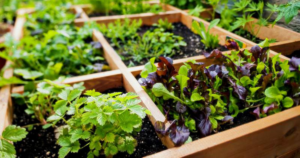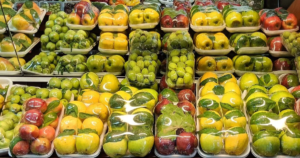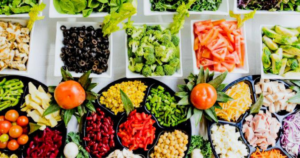Introduction
People often plan to go out with friends or family for a snack or dinner because they need nice meals. An average-earning Indian bachelor spends between Rs. 3000-5000 a month on food, which includes three meals per day, sporadic restaurant dinners, grocery shopping, sporadic drinking, and evening snacks. I’m here to share some advice with you so you may save back on your food expenses while still enjoying delicious meals whenever you want. So, here are some suggestions for cutting food costs.
Most families spend a significant amount of money on their weekly and monthly grocery shopping. There are methods to cut costs with a little preparation. Why not attempt some of these money-saving tips?
“You are what you eat, so don’t be fast, cheap, easy, or fake.”
HOW CAN WE SPEND LESS ON GROCERIE
1. Make a shopping list and stick to it

You shouldn’t choose Cheetos just because a bag of apples is cheaper than a bag of Cheetos. People frequently are unaware that the money they spend on junk food could have gone toward more wholesome foods. You’ll spend far less money if you avoid the processed food aisle. Carbonated beverages, sugary cereals, potato chips, and other snacks are not only unhealthy but also an unnecessary expense. A great strategy to keep up a healthy diet is to have the supplies on hand to make delicious meals all week. When you have a full schedule and your refrigerator, freezer, or pantry are empty, you may turn to fast food or takeout. That is why it is so crucial.
2. Watch for deals and coupons

You can save money on everyday food items by taking advantage of store grocery discounts. To find out what is being provided each week, look for these bargains in your local newspaper or on the websites of significant merchants. You can print a tonne of coupons from websites like Betty Crocker, Pillsbury Bob’s Red Mill, and Kellogg’s if you no longer receive the paper. Most people imagine themselves going through the newspaper and taking their time to clip each money-saving deal when they think about coupons. But happily, using a smartphone to discover supermarket coupons is considerably simpler. There are two ways to save money. You can first link your loyalty card from a participating store to the app and choose different coupons from there.
3. Buy Spices and Herbs in Bulk

Herbs and spices have a limited shelf life, and some are rather expensive. In actuality, the cost of spices in the grocery store is over two times more. For a longer shelf life, buy in bulk if possible and keep the items cool and dark. When you can, grow your own herbs. Spices, nuts, and other items are usually sold in bulk quantities spanning an entire aisle at natural foods stores like Whole Foods. Simply measure what you require, label it, and go to the cash register. You can benefit from such reasonable bulk costs in this manner. If your grocery store or spice supplier doesn’t offer in bulk in this fashion, choose to purchase larger jars instead because the price per ounce is often lower when purchasing more.
4. Grow a Kitchen Garden

Growing your own food is a great method to reduce your spending. Although it may need some time and effort, there are several benefits. >> Start by growing these first 10 garden-friendly crops. Your physical, mental, and emotional health can all be enhanced by gardening. While some vegetables, such as onions, are already inexpensive at the supermarket or farmer’s market and may not be worth the effort to cultivate, there are some other kitchen essentials, such as herbs, that you can simply produce at home to save money. Planning a garden (even a little one) can involve a variety of elements, such as the type of climate where you reside and the amount of available area.
5. Grocery shop online

My grandfather always browsed the daily paper, examining the ads and evaluating the costs. I used to ponder whether the effort was worthwhile, but today I have the same thoughts. The best ways to find the finest prices may sometimes be found by browsing newspaper or internet advertisements if you have the time to visit various establishments. No need to feel devoted to a single store. Pro tip: You can always locate copies of the adverts in the front of most grocery stores when you first arrive if you don’t receive them in the mail or online. If you require assistance, ask the clerk. 2019 saw an increase in internet shopping over traditional retail. Online shopping can save you money in addition to time. the capacity to compare quickly to save money.
6. Shop the freezer section

Do you want to learn how to eat healthily while saving money on groceries? Visit the freezer aisle! The best way to save money on groceries without using coupons is by doing this. The outside of the grocery store, including the freezer section, is where I prefer to shop. As they are collected and frozen at their prime, frozen fruits and vegetables are typically more nutrient-dense than fresh counterparts. I have a lot of frozen vegetables and fruit in my freezer. This makes it simple to quickly prepare nutritious soups, stir-fries, stews, smoothies, and much more.
When food is on sale, you can store up by buying in bulk using your freezer. You can purchase a variety of foods in advance and store them in the freezer. A list of some of the items we store in our freezer is provided below.
- Bread\Flour
- Cheese and Milk Hot Dogs
- Bacon \Lunch meat \Sausage
- Meats, such as chicken, beef, and pork.
- Iced Fruit
- Who wouldn’t want ice cream made from frozen vegetables?
7. Shop in Season

It’s crucial to follow this guideline when grocery shopping on a tight budget. Pomegranates cost far more than typical to purchase in mid-July, and they might not even taste good. Make it a point to exclusively purchase seasonal fruits and vegetables throughout the year. Whether you purchase fruit and vegetables from a farmers’ market or a regular grocery shop, in-season produce is typically far less expensive than out-of-season food. Preserving as much in-season vegetables as you can is one strategy to extend the crop and stretch your food budget. Produce can be preserved with no extra tools or effort. On websites like Taste of Home, Bon Appetit, and others, you can find instructions on how to freeze almost everything.
8. Try different grocery stores

Why did you decide to shop at the current supermarket? Is it the most amiable? Is it along your commute or the one closest to your house? If we’re being completely honest, the most of us likely shop where we do just out of habit. It might be time to end your relationship with your favourite grocery store, we know it’s difficult. It’s their pricey produce, not you. Aldi, Market Basket, WinCo Foods, Food 4 Less, Costco, Walmart, and Trader Joe’s are a few of the least expensive grocery stores in the United States. But bear in mind that things may differ locally, so if you’re unsure which grocery stores are worthwhile investing your time and money in, ask about and compare costs. Additionally, to save money on food, be sure to check the weekly ads in your area for what’s on sale at competing grocery stores. You might find that shopping at the store down the street is costing extra money in the long run.
9. Skip the Packaging

A head of lettuce with some straightforward homemade dressing will cost half as much as a pre-packaged bag of lettuce with a dressing packet and trimmings. wherever possible, choose fruits and vegetables that are not packed. They are typically healthier and less expensive. Yes, it will take a bit longer to chop and prepare, but you’ll finish up with more money in your pocket.
10. Focus on healthy items

Make an effort to concentrate on wholesome and nutritional items while creating your shopping list. This can be difficult, particularly for people who have just begun a healthy eating regimen. Making a list for your grocery shopping will help you avoid buying bad meals that will make you gain weight and defeat your objectives. Make sure your list is broken up into parts and contains everything you will need to prepare nutritious meals for the next few days before you go shopping. It may be a good idea to avoid specific areas of the grocery store entirely if you are aware that they are tempting, such as the bakery or the candy aisle.
Here is an illustration of what might include in a nutritious grocery cart: Cauliflower, asparagus, broccoli, sweet peppers, onions, garlic, bell peppers, greens, leeks, and mushrooms are examples of non-starchy vegetables, Fruits: blueberries, pineapple, apples, grapefruit, oranges, bananas, and avocados, Eggs, fish, chicken, ground turkey, and tofu all include protein. Winter squash, sweet potatoes, and other starchy veggies, quinoa, oats, brown rice, dried black beans, buckwheat, red lentils, barley, and farro are some examples of the grains and legumes, nut butter, almonds, macadamia nuts, pumpkin seeds, and natural peanut butter.
Conclusion
You’ll be able to significantly reduce your shopping spending by using these tips. To obtain the best deal possible, constantly use coupons and discounts, shop deals and seasonal products, buy in bulk, check costs at other stores, and prepare your meals in advance.







2 Comments